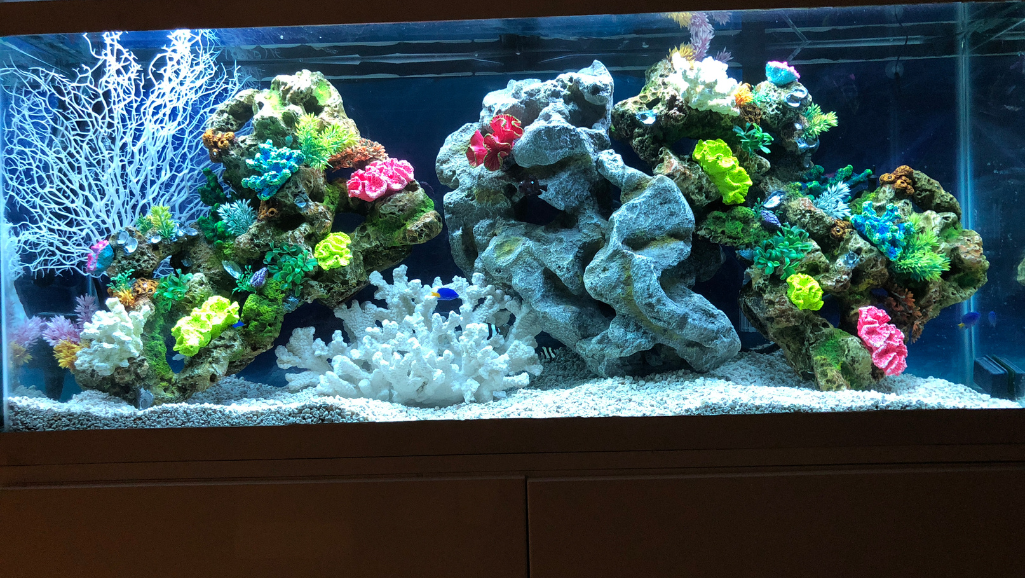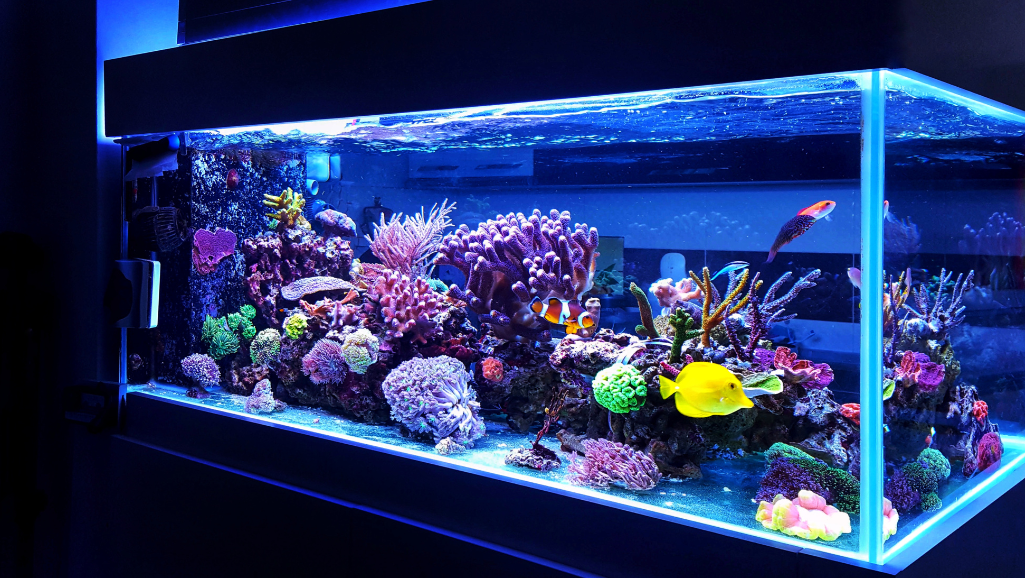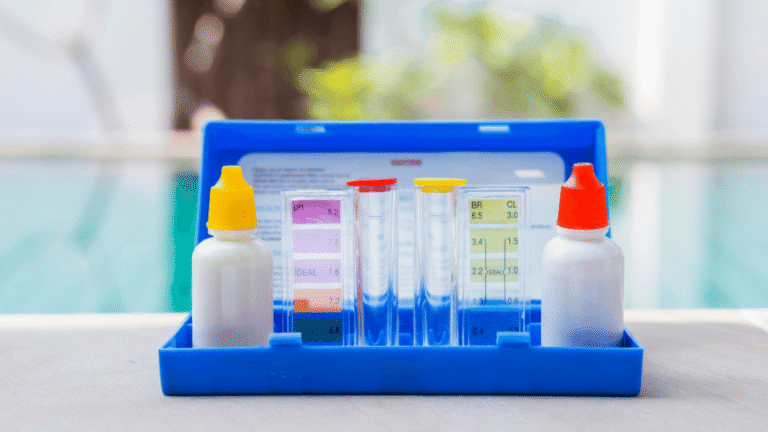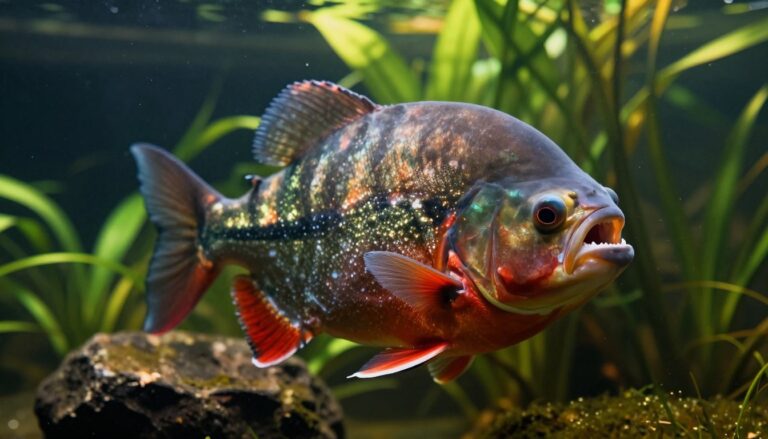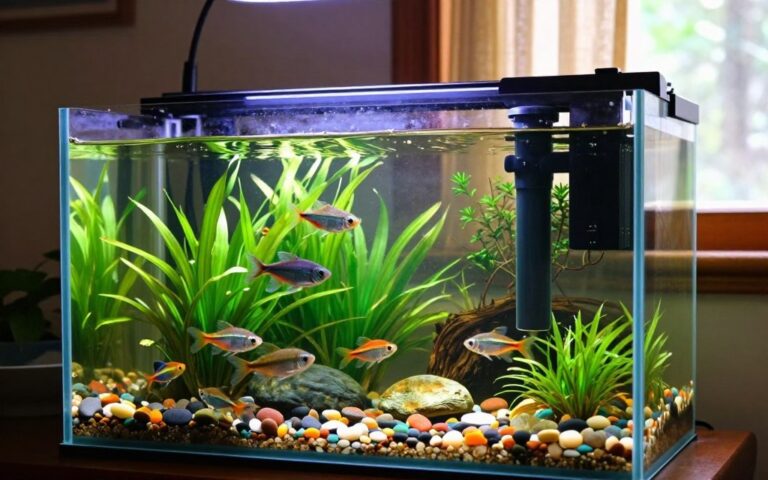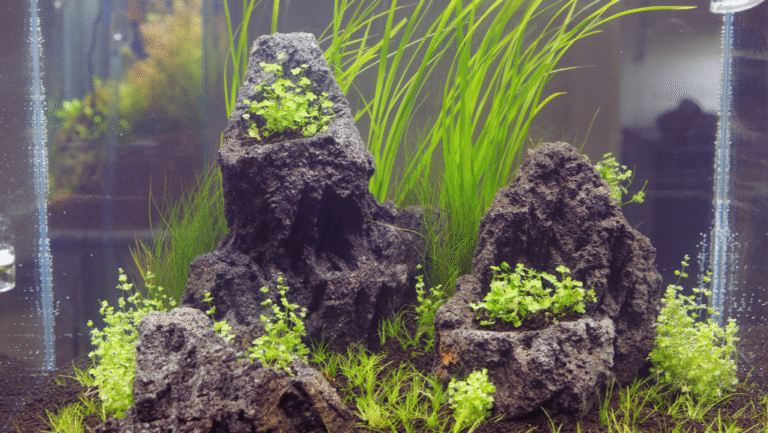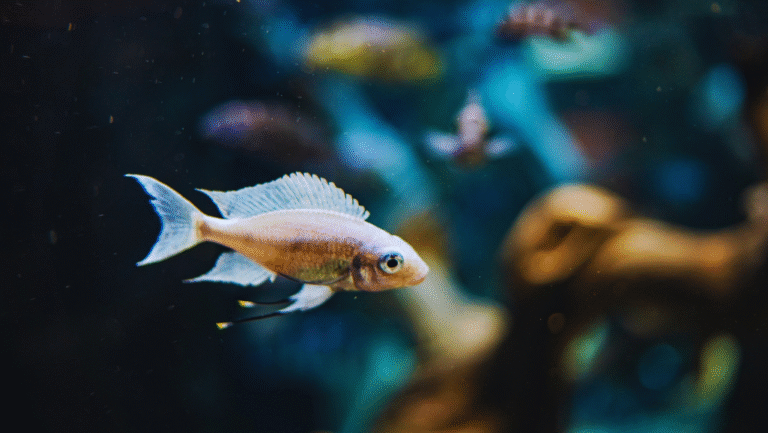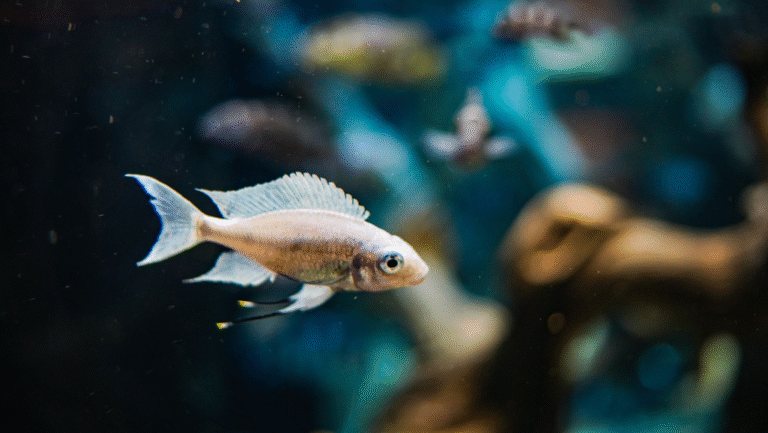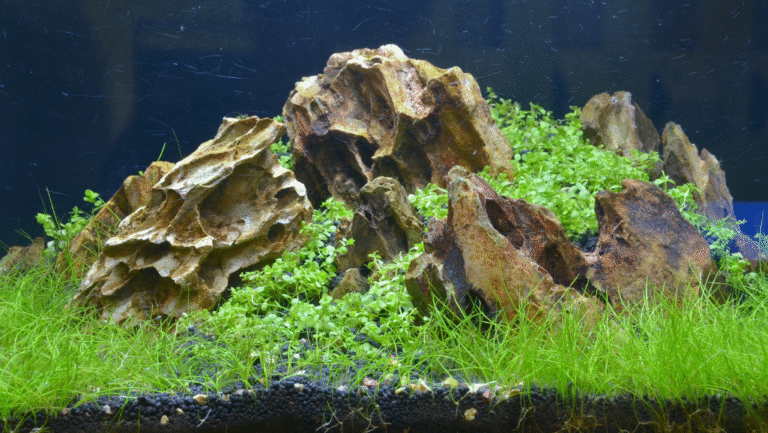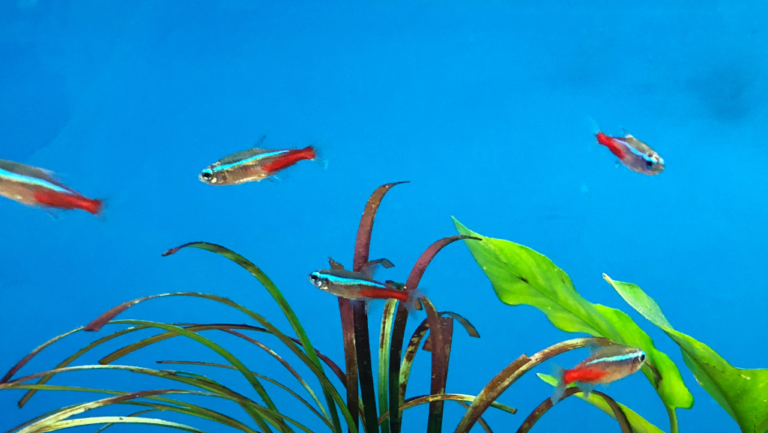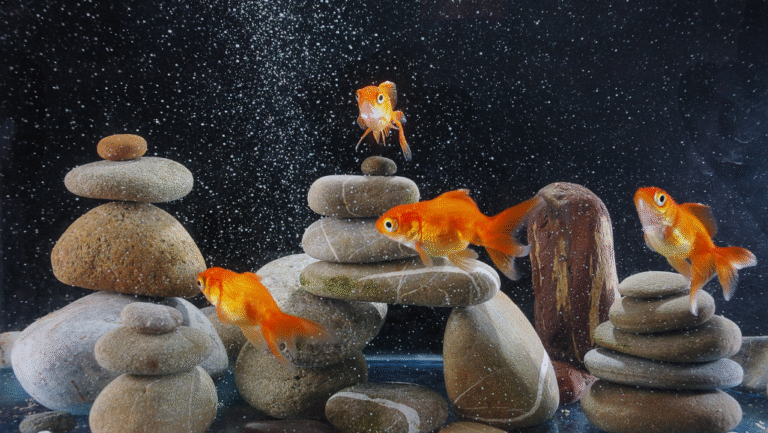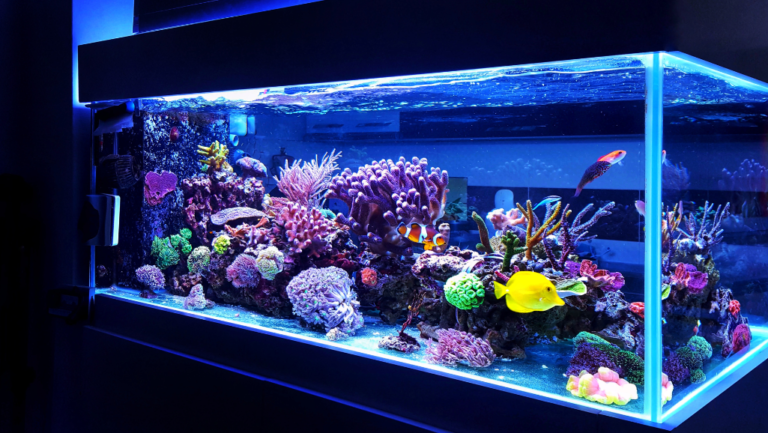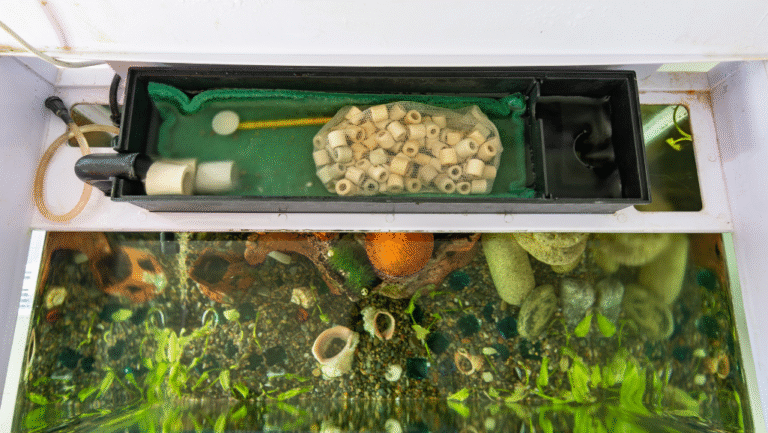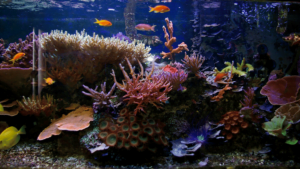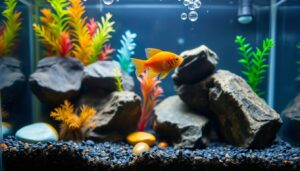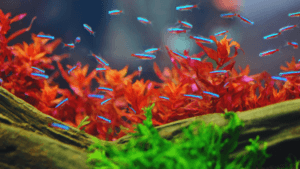Starting an aquarium can be an exciting and rewarding experience, especially for beginners. A well-planned setup ensures a stable environment for your aquatic friends and makes maintenance easier. This guide will walk you through every step, from choosing the right equipment to long-term care.
Larger aquariums are often recommended for newcomers because they are more forgiving of minor mistakes. They provide better water stability and allow for a wider variety of fish. Understanding basic concepts like water quality, First Fish Tank, and equipment selection is crucial for success.
With the right approach, setting up your aquarium can be simple and stress-free. This article is designed to help you feel confident as you embark on this new hobby. Let’s dive into the essentials of creating a thriving aquatic environment.
Key Takeaways
- Larger aquariums are ideal for beginners due to their stability.
- Proper equipment selection is key to a successful setup.
- Understanding water quality is essential for fish health.
- This guide covers everything from planning to maintenance.
- Starting with the right approach makes the process stress-free.
Planning Your Aquarium Journey
Planning your aquarium journey is the foundation for creating a thriving aquatic environment. A well-thought-out approach ensures that your setup meets the needs of your aquatic species while fitting seamlessly into your home. Let’s explore the key steps to get started.
Determining Budget and Tank Size
Choosing the right size for your aquarium is crucial. A larger gallon capacity, such as 20 gallons, offers more stability and flexibility for a variety of species. This size is ideal for beginners because it’s easier to maintain water quality and provides ample space for fish to thrive.
When planning your budget, consider both initial costs and recurring expenses like food and maintenance. A checklist can help you stay organized. Include items like filters, heaters, and lighting, as well as potential upgrades for the future.
Balancing cost and quality is essential. Investing in reliable equipment upfront can save you money and trouble later. Remember, a well-planned aquarium is not just about the initial setup but also about long-term sustainability.
Selecting the Perfect Location
The location of your aquarium plays a significant role in its success. Choose a place with stable flooring and easy access to power outlets. Avoid areas with direct sunlight or high traffic, as these can affect water temperature and stress your fish.
Ensure the space can support the weight of a fully filled tank. For example, a 20-gallon aquarium weighs around 170 pounds. Proper placement also enhances the aesthetic appeal of your home while providing a comfortable environment for your aquatic friends.
For more insights on selecting the right size and variety of fish, check out this guide on aquarium fish size. It’s a valuable resource for understanding how to create a balanced and healthy aquatic habitat.
By carefully planning your budget, size, and location, you’ll set the stage for a successful and enjoyable aquarium experience. Thoughtful preparation now will save you time, money, and effort in the long run.
Choosing the Right Aquarium and Equipment
Selecting the right aquarium and equipment is a critical step in ensuring a thriving aquatic environment. High-quality components not only enhance the aesthetics but also provide a stable habitat for your aquatic species. Let’s explore the essentials to get started.
Aquarium, Stand, and Glass Considerations
When choosing an aquarium, prioritize durability and functionality. A sturdy stand is essential to support the weight of a fully filled tank. For example, a 20-gallon setup can weigh over 170 pounds. Opt for a glass tank, as it’s less prone to scratching and more affordable than acrylic.
Ensure the glass is thick enough to handle water pressure. A well-constructed aquarium not only looks great but also ensures safety. Investing in a reputable brand guarantees longevity and reliability.
Essential Gear: Filter, Heater, and Lighting
A reliable filter is the backbone of any aquarium. It keeps the water clean and removes harmful toxins. For beginners, sponge filters are an excellent choice due to their gentle flow and ease of maintenance. Brands like Marineland offer powerful options like the Penguin Power Filters.
Maintaining the right temperature is crucial. A heater with adjustable settings, such as the EHEIM Jager, ensures your aquatic friends stay comfortable. Aim for 5 watts of heat per gallon of water for optimal performance.
Proper lighting enhances the beauty of your aquarium and supports plant growth. LED lights are energy-efficient and ideal for controlling algae. Choose a model that suits your tank’s size and needs.
Additional Accessories and Decorations
Accessories like substrate, plants, and decorations add personality to your aquarium. Gravel or sand provides a natural look, while live plants improve water quality. Ornaments like caves and driftwood create hiding spots, reducing stress for your aquatic species.
Compatibility between equipment is key. Ensure your filter, heater, and lighting work seamlessly together. This harmony ensures smooth operation and long-term success.
By investing in high-quality equipment and thoughtful decorations, you’ll create a beautiful and functional aquarium. Proper selection now will save you time and effort in the future.
How to Set Up Your First Fish Tank
A successful aquarium begins with careful preparation of the substrate and water. These initial steps are crucial for creating a stable and healthy environment for your aquatic species. Let’s dive into the essential tasks to get your setup ready.
Preparing the Substrate and Cleaning Materials
Start by thoroughly cleaning your gravel or substrate. Rinse it multiple times under running water to remove dust and debris. This step prevents cloudy water and ensures clarity from the start.
If you’re using a kit, follow the instructions carefully. Proper cleaning saves time and avoids long-term issues. Spread the gravel evenly across the bottom of the tank, creating a slight slant for a natural look.
Filling the Tank and Conditioning the Water
Fill the tank slowly to avoid disturbing the substrate. Use a hose or buckets for even distribution. Once filled, add a water conditioner like Tetra® AquaSafe® to remove harmful chlorine and chloramine.
Conditioning the water is essential for fish safety. Allow the tank to sit for 24 hours to ensure all equipment is functioning properly. This time also helps stabilize the temperature and environment.
By following these steps, you’ll create a solid foundation for your aquarium. Proper preparation now ensures a thriving aquatic habitat for years to come.
Proper Equipment Installation and Cycling Process
Proper installation of aquarium gear ensures a safe and stable environment for your aquatic species. This step is critical for creating a balanced ecosystem that supports healthy life. Let’s break down the essential tasks to get your setup running smoothly.
Installing Filters, Heaters, and Test Kits Safely
Start by placing your filter in a spot that ensures optimal water flow. Avoid electrical hazards by keeping cords dry and using a drip loop. For heaters, position them near the filter outlet to distribute warmth evenly.
Use a water test kit to monitor key parameters like ammonia and nitrate levels. Regular testing helps you catch imbalances early. As one expert notes,
“Testing is the lifeline of a healthy aquarium.”
Understanding and Managing the Cycling Process
The cycle is a biological process where beneficial bacteria break down harmful ammonia into less toxic nitrate. This process typically takes 6-8 weeks but can be sped up with bacteria boosters or established filter media.
During the cycle, monitor ammonia and nitrite levels closely. A sudden drop in nitrite and a rise in nitrate indicate the process is complete. Patience is key—rushing can harm your aquatic species.
For a detailed guide on setting up your aquarium, visit Aquarium Co-Op. Learn more about beginner aquarium tips at Aqua Joy Life.
Designing a Healthy Aquarium Environment
Creating a healthy aquarium environment combines creativity and science to ensure a thriving ecosystem. A well-designed setup not only looks stunning but also supports the well-being of your aquatic species. Let’s explore how to achieve this balance.
Creating Natural Habitats with Plants and Rocks
Using plants and rocks can transform your aquarium into a natural underwater landscape. Live plants like Java Fern or Anubias absorb nitrates, improving water quality. They also provide hiding spots, reducing stress for your aquatic friends.
For a low-maintenance option, consider silk or plastic plants. These mimic the look of real plants without the need for special care. Pair them with rocks or driftwood to create depth and visual interest.
When arranging rocks, ensure they are stable and won’t topple. Use them to create caves or terraces, mimicking natural habitats. This setup not only enhances aesthetics but also supports the natural behavior of your aquatic species.
Maintaining Water Quality and Temperature
Proper water quality is essential for a healthy aquarium. Regular water changes (about 25% weekly) help remove toxins and maintain balance. Use a water test kit to monitor levels of ammonia, nitrite, and nitrate.
Maintaining the right temperature is equally important. Most freshwater species thrive between 74-80°F. Place your heater near the filter outlet to ensure even heat distribution. For larger setups, consider using two smaller heaters for redundancy.
Here are some tips to keep your aquarium in top shape:
- Trim live plants regularly to promote healthy growth.
- Clean rocks and decorations during water changes to prevent algae buildup.
- Monitor temperature daily to ensure consistency.
By combining natural elements like plants and rocks with proper water quality and temperature management, you’ll create a thriving and visually appealing aquarium. This approach ensures a healthy environment for your aquatic species to flourish.
Practical Tips for Long-Term Aquarium Maintenance
Maintaining a thriving aquarium requires consistent care and attention to detail. A well-maintained habitat ensures the health and happiness of your aquatic species while preventing common issues. Let’s explore practical strategies to keep your setup in top condition.
Routine Cleaning and Equipment Checks
Regular maintenance is the cornerstone of a healthy aquarium. Start by performing weekly water changes, replacing 15-25% of the water to remove toxins and maintain balance. Use a gravel vacuum to clean the substrate and remove debris.
Check your equipment daily to ensure everything is functioning properly. Monitor the flow rate of your filter and inspect the heater for consistent temperature. A test kit is essential for monitoring water quality, including levels of ammonia, nitrite, and nitrate.
For a detailed guide on aquarium maintenance, visit Aqueon’s practical tips. It’s a valuable resource for understanding how to create a balanced and healthy aquatic habitat.
Troubleshooting Common Issues
Even with regular care, issues can arise. Cloudy water often indicates overfeeding or insufficient filtration. Use your test kit to identify imbalances and adjust feeding or filtration as needed.
If you notice algae buildup, reduce light exposure and clean stone ornaments during water changes. Ensure your aquarium’s weight is evenly distributed by checking the stand and floor support regularly.
For more insights on maintaining water quality, check out this guide on aquarium care. It provides actionable advice for long-term success.
By following these tips, you’ll create a sustainable and thriving environment for your aquatic species. Consistent maintenance and proactive troubleshooting ensure your aquarium remains a beautiful and healthy centerpiece in your home.
Conclusion
Creating a thriving aquatic environment is a journey that rewards patience and attention to detail. From planning and selecting equipment to setting up and cycling your new tank, each step plays a vital role in ensuring long-term success. Avoid shortcuts, as they can harm the delicate balance of your ecosystem.
Regular maintenance, such as checking equipment and monitoring water quality, is essential for supporting the health of your aquatic species. Incorporating natural elements like wood decorations not only enhances the aesthetics but also creates a more natural habitat.
By revisiting each section of this guide, you’ll find detailed procedures and tips to help you along the way. A well-maintained aquarium not only beautifies your space but also offers a deeply rewarding hobby experience. With careful planning and quality materials, your new tank will thrive for years to come.
